| << Chapter < Page | Chapter >> Page > |
Find the slope of the line shown.
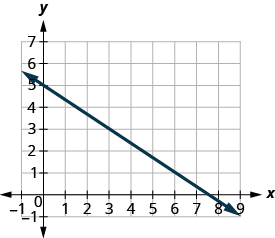
| Locate two points on the graph whose coordinates are integers. | and |
| Which point is on the left? | |
| Starting at , sketch a right triangle to . |
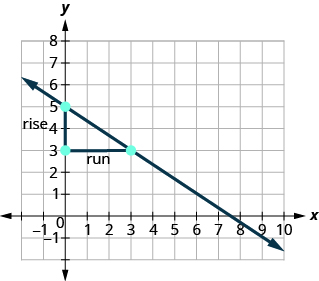 |
| Count the rise—it is negative. | The rise is . |
| Count the run. | The run is 3. |
| Use the slope formula. | |
| Substitute the values of the rise and run. | |
| Simplify. | |
| The slope of the line is . |
So increases by 3 units as decreases by 2 units.
What if we used the points and to find the slope of the line?
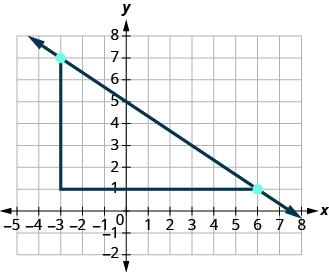
The rise would be and the run would be 9. Then , and that simplifies to . Remember, it does not matter which points you use—the slope of the line is always the same.
In the last two examples, the lines had y -intercepts with integer values, so it was convenient to use the y -intercept as one of the points to find the slope. In the next example, the y -intercept is a fraction. Instead of using that point, we’ll look for two other points whose coordinates are integers. This will make the slope calculations easier.
Find the slope of the line shown.
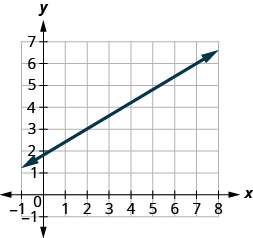
| Locate two points on the graph whose coordinates are integers. | and |
| Which point is on the left? | |
| Starting at , sketch a right triangle to . |
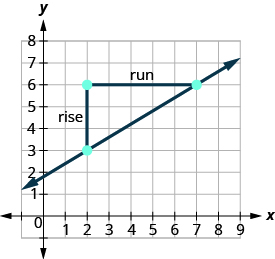 |
| Count the rise. | The rise is 3. |
| Count the run. | The run is 5. |
| Use the slope formula. | |
| Substitute the values of the rise and run. | |
| The slope of the line is . |
This means that increases 5 units as increases 3 units.
When we used geoboards to introduce the concept of slope, we said that we would always start with the point on the left and count the rise and the run to get to the point on the right. That way the run was always positive and the rise determined whether the slope was positive or negative.
What would happen if we started with the point on the right?
Let’s use the points and again, but now we’ll start at .
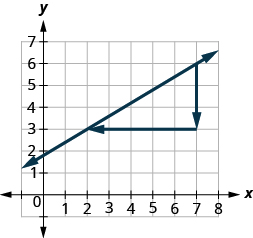
It does not matter where you start—the slope of the line is always the same.
Do you remember what was special about horizontal and vertical lines? Their equations had just one variable.
So how do we find the slope of the horizontal line ? One approach would be to graph the horizontal line, find two points on it, and count the rise and the run. Let’s see what happens when we do this.
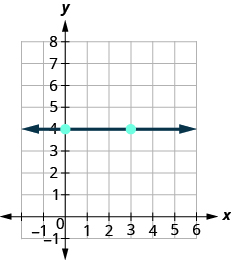
All horizontal lines have slope 0. When the y -coordinates are the same, the rise is 0.
The slope of a horizontal line, , is 0.

Notification Switch
Would you like to follow the 'Elementary algebra' conversation and receive update notifications?